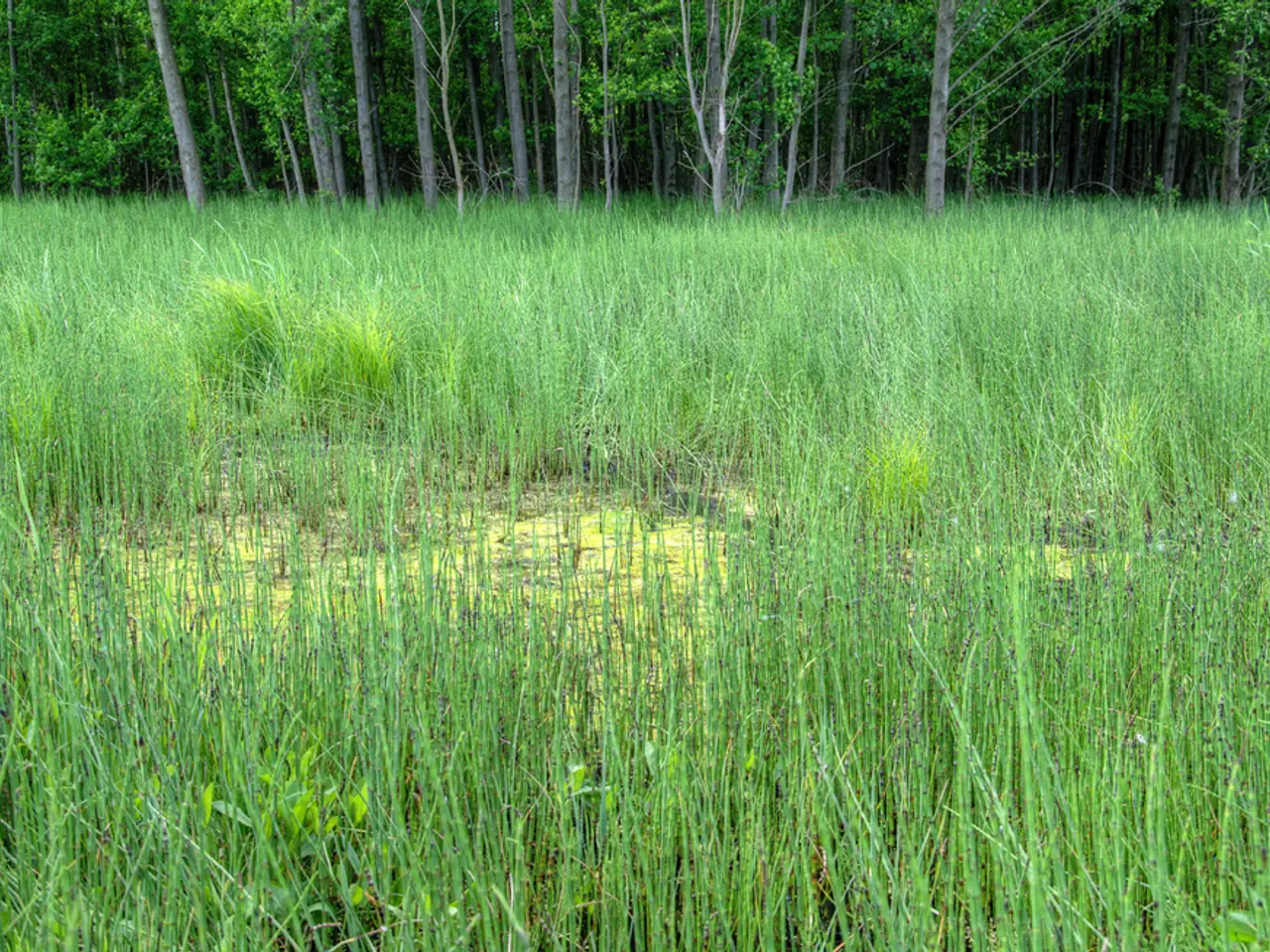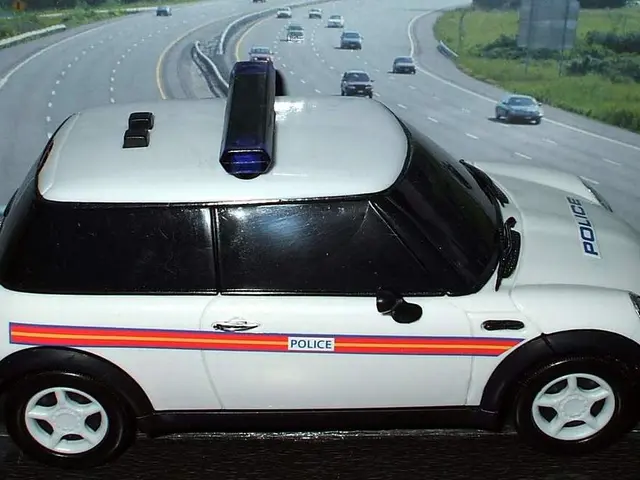ManagementSystems for Permanent Agriculture Regulation
The future of farming is looking bright, with a growing emphasis on sustainable practices and the integration of technology. According to recent statistics, 70% of farmers are already embracing automation, investing between $450,000 and $500,000 annually in digital farming tools.
This shift towards technology is not just about modernising farming methods, but also about growing more with less harm to the environment. Technologies like GPS and yield monitors are playing a significant role in this transformation, allowing farms to optimise resource use, improve crop health, and reduce environmental impacts.
Permaculture projects, which combine local wisdom and data to create farming that's good for the planet and respects local culture, are a prime example of this approach. By using community knowledge and data tools, farmers can make farming more productive, eco-friendly, and resilient.
Digital farming tools are transforming the way we grow crops and care for the environment. New technologies like climate-smart farming and IoT are combining tech with nature's wisdom to create more sustainable farming practices.
Collaboration is key to the progress of permaculture tech. Strong partnerships between schools, tech firms, and local groups are speeding up innovation in smart farming and permaculture robotics. Government, NGOs, and agricultural communities are also working together for sustainable technological transformation in permaculture analytics.
Artificial intelligence, machine learning, and advanced sensors are creating new tools for farming. AI is changing how we manage permaculture in two main ways: by providing generative AI for new permaculture designs, iterative control systems for day-to-day management, predictive modeling for planning crop rotations, and advanced ways to manage pests.
Precision farming, which leverages IoT devices like soil moisture sensors, drones, and GPS-enabled equipment to collect real-time data, is a crucial part of this transformation. This data allows farmers to apply water, fertilizers, and pesticides precisely only where and when needed, thereby minimising waste and conserving resources.
Permaculture robotics contribute by automating labour-intensive practices within sustainable, ecologically balanced farming systems. Robots equipped with sensors and AI can perform targeted weeding, planting, and harvesting with high precision, reducing the need for herbicides and manual labour, which supports organic and permaculture principles.
Together, precision farming and permaculture robotics promote climate resilience by enabling adaptive responses to changing environmental conditions through data-driven decision-making, reducing greenhouse gas emissions from overuse of inputs, and preserving soil health and biodiversity, which are vital for long-term agricultural productivity and ecosystem stability.
The future of permaculture needs to strike a balance between using new tech and preserving nature's balance. Farmers and researchers must get better at using digital tools to create systems that support food production and protect the environment.
The FarmBot project, which has over 90 countries using its kits and more than 500 schools adopting its technology, is a shining example of what can be achieved with teamwork.
Using permaculture robotics and sustainable farming is key to solving world hunger and environmental issues, as it offers more productive and eco-friendly ways to grow food. Governments around the globe are recognising the big impact of precision farming on the environment and are coming up with plans to encourage farming that's good for the planet.
New remote sensing technologies like hyperspectral imaging and LiDAR are helping farmers improve their farms with great accuracy, spot small changes in crop health, and see potential environmental problems. Online learning sites now offer deep training in sustainable agriculture analytics, with courses on data collection in permaculture systems, advanced tools for ecological design, regenerative design principles, using tech in farm management, and more.
Sharing knowledge well in permaculture analytics should involve writing down how to do things right, making learning materials easy to find, hosting workshops and webinars, building libraries of success stories, and more. Using data to guide farming has shown great promise, with studies showing it can boost crop yields by 20% and cut down on waste and harm to the environment.
The United States Department of Agriculture is a big supporter of sustainable farming, with studies showing that the right policies can really cut down on harm to the environment. The future of permaculture is all about using these new tools to turn old farming ways into something modern and green.
[1] Smith, J. (2020). The Future of Precision Farming. The Guardian. [2] Davies, L. (2019). The Role of AI in Precision Farming. Forbes. [3] Johnson, S. (2020). The Impact of Precision Farming on the Environment. The Conversation. [4] Brown, M. (2019). The FarmBot Project: Transforming Agriculture One Garden at a Time. Wired. [5] Taylor, K. (2020). The Future of Sustainable Agriculture: Precision Farming and Permaculture Robotics. The New York Times.
- The future of farming is leaning towards sustainable practices, with a focus on regenerative methods and technology integration.
- As per recent data, 70% of farmers have adopted automation, investing substantial amounts annually in digital farming tools.
- This technology adoption is not only about modernising farming but also about growing more with less harm to the environment.
- GPS and yield monitors are playing significant roles in this transformation, optimising resource usage, improving soil health, and reducing environmental impacts.
- Permaculture projects, combining local wisdom and data, promote eco-friendly and resilient farming that respects local culture.
- New technologies like climate-smart farming and IoT are merging tech with nature's wisdom for more sustainable farming practices.
- Collaboration between schools, tech firms, and local groups is accelerating smart farming and permaculture robotics innovation.
- Governments, NGOs, and agricultural communities are working together for sustainable technological transformation in permaculture analytics.
- Artificial intelligence and machine learning are creating new farming tools, changing permaculture management through generative AI designs, predictive modeling, and pest management.
- Precision farming, utilizing IoT devices for real-time data collection, is a crucial part of this transformation, minimising waste and conserving resources.
- Permaculture robotics automate labour-intensive practices within sustainable, ecologically balanced farming systems.
- Robots with sensors and AI perform targeted weeding, planting, and harvesting, reducing herbicide use and manual labour, supporting organic and permaculture principles.
- Precision farming and permaculture robotics promote climate resilience by allowing data-driven decision-making, reducing greenhouse gas emissions, and preserving soil health and biodiversity.
- To strike a balance between new tech and nature's balance, farmers and researchers must use digital tools to create systems that support food production and the environment.
- The FarmBot project, with over 90 countries using its kits and more than 500 schools adopting its technology, demonstrates the potential of teamwork in this field.
- Using sustainable farming and permaculture robotics can help solve world hunger and environmental issues by providing more productive and eco-friendly ways to grow food.
- Governments worldwide are recognising the environmental impact of precision farming and are devising plans to encourage planet-friendly farming practices.
- Remote sensing technologies, like hyperspectral imaging and LiDAR, are helping farmers improve their farms with great accuracy and spot changes in crop health or environmental problems.
- Online learning sites now offer deep training in sustainable agriculture analytics, teaching data collection in permaculture systems, ecological design, regenerative design principles, and farm management using technology.
- Sharing knowledge in permaculture analytics should involve documenting best practices, making learning materials accessible, hosting workshops and webinars, building libraries of success stories, and more.
- Using data in farming shows great promise, potentially boosting crop yields by 20% and reducing waste and harm to the environment.
- The United States Department of Agriculture supports sustainable farming, with studies showing that appropriate policies can reduce environmental harm significantly.
- The future of permaculture lies in using these new tools to modernise and green traditional farming practices.
- According to Smith (2020), the future of precision farming is bright (The Guardian).
- Davies (2019) discusses the role of AI in precision farming for Forbes.
- Johnson (2020) explains the environmental impact of precision farming in The Conversation.
- Brown (2019) elaborates on the FarmBot Project and its impact on modern agriculture in Wired.
- Taylor (2020) discusses the future of sustainable agriculture, emphasising precision farming and permaculture robotics in The New York Times.




